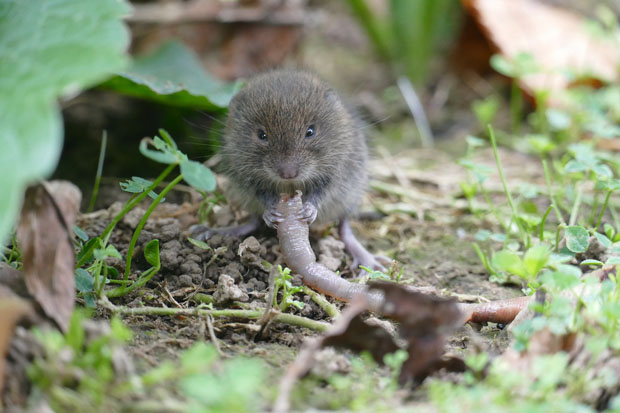Recover Your Yard's Wellness: Aggressive Vole Parasite Control
Recover Your Yard's Wellness: Aggressive Vole Parasite Control
Blog Article
Mastering Vole Pest Control: In-depth Insights on Infestation Prevention and Treatment Techniques
By identifying the subtle indications of vole invasion early on, we can take positive steps to prevent widespread damages. In this conversation, we will discover the nuances of vole habits, delve into the identification of infestation indicators, and reveal the most effective prevention and therapy approaches.
Recognizing Vole Habits
Analyzing the foraging patterns of voles supplies beneficial understandings right into their habits and habitat preferences. By observing their foraging behavior, scientists can gain a much better understanding of where voles like to establish their habitats and the extent of their ecological impact.
Research shows that voles exhibit discerning feeding habits, preferring seeds, roots, and roots - vole yard damage. This dietary preference influences their foraging patterns, leading them to locations abundant in greenery and ground cover. In addition, voles are recognized to create intricate passage systems for foraging and nesting purposes, suggesting a high degree of adaptability to their environments
Understanding vole actions is important for applying targeted bug control procedures that disrupt their environment choices and foraging activities. By studying their behavior, specialists can create more effective prevention and therapy techniques to handle vole problems.
Identifying Signs of Vole Infestation
Vole infestations can be spotted by identifying particular indications of their presence in an area (vole lawn damage). One of the most common signs of a vole infestation is the presence of surface paths.
Another vital sign of vole invasion is the presence of little burrow openings in the ground. Furthermore, voles are understood to leave behind eaten plant stems, origins, and light bulbs near their burrow openings, showing their feeding activity in the location.
Additionally, vole droppings can additionally signify their existence (vole pest control). Vole droppings are tiny, brownish, and cylindrical in shape, looking like grains of rice. Finding these droppings along runways or near burrow openings can confirm a vole problem. By being cautious for these signs, residential or commercial property proprietors can promptly deal with vole invasions and avoid further damage.
Executing Aggressive Avoidance Procedures
To successfully mitigate the dangers linked with vole infestations, residential property owners can proactively carry out a range of precautionary procedures intended at safeguarding their gardens and landscapes. Furthermore, maintaining garden areas clean and decreasing clutter where voles might conceal or nest is important in minimizing their presence.
Additionally, using natural vole deterrents like castor oil-based repellents or predator pee can act as effective safety nets. It is likewise a good idea to regularly examine exterior rooms for any type of indications of vole task, such as paths or burrow openings, to attend to possible infestations immediately. By adopting these positive avoidance techniques, homeowner can substantially lower the likelihood of vole damages and maintain the health and wellness and looks of their landscapes.
Reliable Therapy Techniques
Incorporating targeted trapping techniques and using accepted rodenticides are necessary components of efficient therapy methods for managing vole problems. Capturing can be a reliable means to minimize vole populations, specifically when positioned tactically in their active paths. Snap catches and live traps can both work, with the last permitting the capture and relocation of voles. When using rodenticides, it is crucial to adhere to security guidelines to avoid injury to non-target animals and pet dogs. Location rodenticides in protected lure terminals to decrease dangers to unintended targets. Additionally, habitat alteration, such as reducing ground cover and removing sources of food, can help prevent voles from infesting a location. Routine surveillance and maintenance are also useful site key elements of effective therapy techniques to make sure that vole populaces are maintained under control. By integrating trapping, rodenticides, habitat modification, and constant monitoring, reliable vole insect control can be achieved.

Tracking and Maintenance Tips
Preserving a methodical routine for surveillance and performing routine upkeep activities is essential to sustain the efficiency of vole bug control procedures. Routine surveillance enables the very early discovery of vole task, allowing timely intervention see here now before infestations intensify. To efficiently keep track of vole populations, strategically placed traps can be utilized in vole paths or near burrow entries. By regularly examining these catches, property proprietors can determine the degree of vole activity and adjust control strategies as necessary.
Additionally, keeping a clean and tidy landscape is essential in vole avoidance. Clearing away particles, such as stacks of wood or thick vegetation, removes prospective vole environments. On a regular basis cutting and cutting grass greenery aids minimize vole concealing areas and decreases their access to food resources.

Final Thought
Finally, mastering vole insect control needs a solid understanding of vole habits, the capability to determine indicators of infestation, carrying out positive avoidance measures, efficient therapy techniques, and consistent surveillance and maintenance. By taking a detailed strategy to vole control, people can successfully handle and avoid infestations, inevitably securing their residential property and bordering environment from damages created by these little rodents.
In this conversation, we will explore the subtleties of vole habits, delve right into the identification of infestation indications, and discover the most efficient avoidance and treatment approaches.Integrating targeted trapping approaches and utilizing accepted rodenticides are necessary components of reliable treatment strategies for handling vole infestations. To properly keep track of vole populaces, tactically placed catches can be utilized in vole runways or near burrow entrances. Checking and repairing any type of problems to these structures ensures that vole control stays reliable in protecting residential or commercial properties from problems. click now By integrating these surveillance and maintenance methods into a detailed vole parasite control plan, people can effectively handle vole populations and safeguard their residential or commercial properties from damages.
Report this page